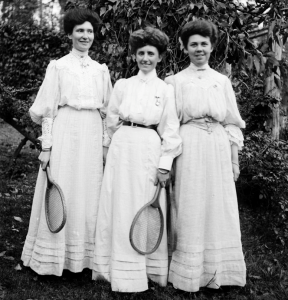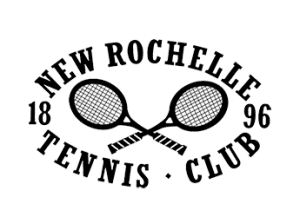History of New Rochelle Tennis Club
 On April 29, 1905, The New Rochelle Pioneer described the opening day of what was then called The Siwanoy Tennis Club of New Rochelle this way: “Everything points to the most interesting and enterprising tennis season ever known in New Rochelle.” In addition to reporting on recent elections, strong membership numbers, and an exciting slate of events and tournaments in the coming summer, the Pioneer added, “The club has a large cash balance and is in excellent condition financially.”
On April 29, 1905, The New Rochelle Pioneer described the opening day of what was then called The Siwanoy Tennis Club of New Rochelle this way: “Everything points to the most interesting and enterprising tennis season ever known in New Rochelle.” In addition to reporting on recent elections, strong membership numbers, and an exciting slate of events and tournaments in the coming summer, the Pioneer added, “The club has a large cash balance and is in excellent condition financially.”
Tennis was booming in New Rochelle and an upstart tennis club had grown up to compete among traditional powerhouse clubs like N.Y.A.C., New York’s West Side Tennis Club, and the Westchester Country Club, among others.
Just a few years later, The Siwanoy Tennis Club of New Rochelle—which had formerly been known as the Bancker Place Tennis Club, and had bounced around in its earliest days from Homestead Park to Stephenson Park—would change its name to The New Rochelle Lawn Tennis Club (it sometimes dropped the “Lawn”) and uproot itself one more time to its present-day location.
The new digs made an impression, with their handsome ivy-covered clubhouse located on a leafy street in the new development, designed to look almost like a forest glen. Looking forward to the season in February 1911, one writer observed in The Pioneer, “With its French windows swinging out over velvety lawns with its long, graceful and inviting pergola and with its great, big, cozy and ‘comfy’ living room will be just what a Vassar girl called it last year—‘cutey, cutey, cutey, club,’ and that is just what it is.”
In search of a sense of history about The New Rochelle Tennis Club, we did a lot of digging in the offseason.
And it paid off.
We found a trove of articles, essays, pictures, advertisements, and real estate plans having to do with the (perhaps unexpectedly) rich early history of the club, which began as a haven for collegiate athletes, weekend warriors, and those interested more in socializing than in tennis. We also discovered a longstanding tradition of high levels of play, social dynamism, and—most importantly and perhaps recognizably to today’s members—an eclectic cast of characters like Silvia Leech (one of the top female players in Westchester at the time), Howard Stiles (described in The Pioneer as “he of the electric serve and hurricane speed”), A.J.L. Bradley (a charismatic and gregarious early club president and prominent local Republican), and Mr. and Mrs. P.M. Arthur (local philanthropists who hosted an annual tennis tournament in the fall to raise money for the New Rochelle Hospital).
For the first two decades of its existence, tennis clearly played an important role in New Rochelle. Throughout summers, it is not uncommon to find one or two columns on the front page of The Pioneer dedicated to describing the activities of members. Recaps of matches can be found in The New York Times, The New York Observer, and elsewhere. Even in winter, when the club hosted galas and dances, writers covered the proceedings in social columns.
With more than 100 members as early as 1904, it turns out that The New Rochelle Tennis Club had already become an important part in the sporting, social, cultural, and philanthropic life of New Rochelle and Westchester. Over the course of the next century, it grew up as an institution at the same time that Westchester itself entered the American cultural imagination as the nation’s quintessential suburban landscape.
The history of the club mirrors the history of tennis in the region. It appears, for example, that the club hosted the first Metropolitan Interclub Tennis League (MITL) tournament (though in the early seasons of interleague play, the club was the rough equivalent of the Bad News Bears, losing as many as an incredible 40 matches in a season). And in a small way, it reflects the broader social, economic, and demographic history of New Rochelle and Westchester. As the importance of the suburbs expanded and contracted—and as tennis’s popularity waxed and waned—so too did the club’s membership and role.
During Summer 2017, we’ll post short articles about the 122-year history of The New Rochelle Tennis Club, focusing especially on stories about its earliest days, and attempting to situate it in the broader context of the then-growing city, county, and region. It’s fun to imagine


